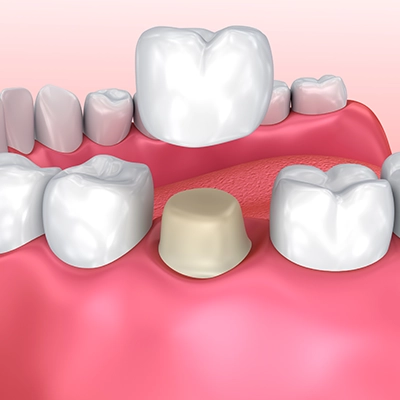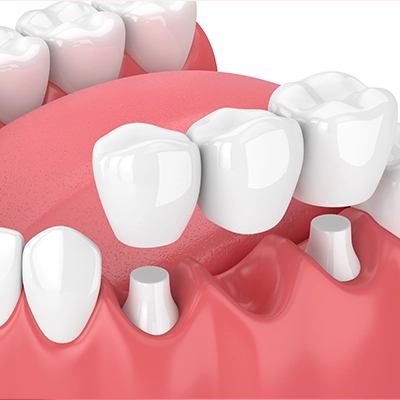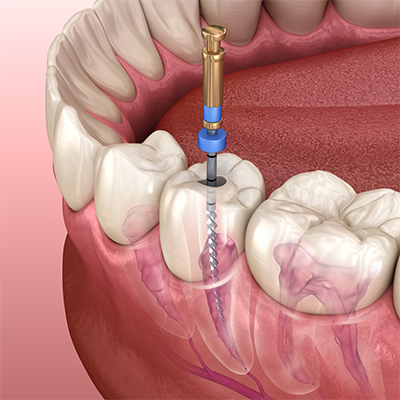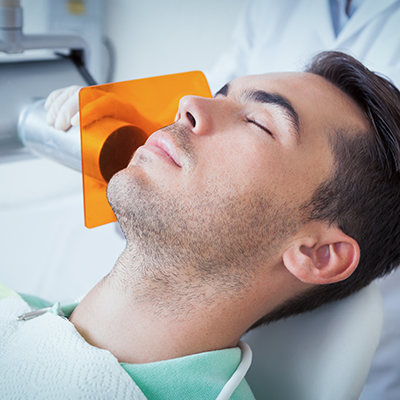Family Dentist in Clearwater, FL
Clearwater Family Dentist
Family Dentistry Procedures







Dr. Baker offers the highest level of dental health care for everyone in your family.
Children’s Dentistry
At Baker Cosmetic & Family Dentistry of Clearwater, Florida, we offer dental care for all your family. Dr. Baker encourages parents to bring their little ones for examination at least twice a year. He firmly believes that good dental habits should be acquired from a very early age. During these sessions, besides checking his teeth, he will teach them how they can keep them healthy. Dr. Baker, an experienced family dentist, will make sure that your children have a pleasant, trauma-free experience on their first visits. This positive experience will be crucial for their future, as they will be less likely to suffer from dental anxiety when they are older.

When is the perfect moment for a first visit to the dentist? The American Academy of Pediatric Dentistry advises parents to make an appointment for their children within six months of the first baby tooth’s eruption or by his or her first birthday. An early oral examination can help detect tooth decay in its first stages, which can be treated with minimally invasive procedures.
In each visit, apart from the oral evaluation, we will gently remove any dental plaque or tartar that your child might have accumulated between visits. These cleanings are vital to prevent the development of gum disease, tooth decay and other oral issues.
All children deserve to have a pleasant experience at the dentist. Dr Baker, a family dentist with vast experience in pediatric dentistry, knows how to make them feel comfortable during their first visit. He understands that, in most cases, they are anxious only because they fear the unknown.
The best way to build a trusting child-dentist relationship is to be patient and take time to explain everything in great detail. Children are inquisitive, and even more if they are in a new environment – they will have countless questions. Dr Baker will answer all these questions clearly and simply. Besides, suppose he needs to carry out any dental procedure like fillings or a cleaning. In that case, he will gently explain it using non-frightening words (forget about “needles”, “drill”, or “pain”) and show all the instruments that are going to be involved.
Our team agrees with the American Academy of Pediatric Dentistry and advises parents to bring their children six months after the first baby tooth appears or by his o her first birthday. This visit should be fun and educational, and if possible, unnecessary. Unnecessary because the ideal scenario is that the child goes to the office only to have a chat with the dentist and start building a trusting relationship. If the child is pressured because he or she needs to have a treatment done that day, the chances are that the child wouldn’t be relaxed and end up having a bad experience.
A typical first visit to the dentist includes:
Fill out our easy forms online:
All the forms needed for pediatric visits are available in our secure Online Registration Portal. Complete the questionnaire online and save time on your visit!
At Baker Cosmetic & Family Dentistry, we focus on the prevention and early diagnosis of dental diseases. Choose us as your family dentist and give us the chance to instil great dental habits in your children!
Dental Sealants are a thin resin cover applied to the occlusal (chewing) surfaces of the back teeth to prevent decay. These chewing surfaces have deep pits and fissures that are likely to accumulate dental plaque. If this bacterial build-up is not correctly removed (something normal considering children’s poor hygiene), it can cause decay and damage these newly erupted teeth. The sealants aim to act as a protective coat preventing the accumulate of dental plaque.
Sealants are common in first and second permanent molars, especially when they just erupted, so commonly they are applied to children between 5 and 14 years. They last up to five years (they simply wear out), and at that moment, the dentist will evaluate whether they need replacement.
When New Teeth Arrive
Between the first 6 to 12 months, your child will experience the eruption of his or her first baby tooth. In a typical situation, all baby teeth will have come out by the age of 3. It’s normal for children to experience pain or tenderness where the tooth is going to come out. We recommend that parents rub a clean finger or a cool, wet cloth in the sore gums to relieve this pain. Another possibility is to use a teething ring.
The first permanent teeth to erupt are the first molars, generally by the age of 6. Permanent teeth will continue to come out until age 21. Adults have 32 permanent teeth if they keep the four wisdom teeth.
Adopting Healthy Oral Hygiene Habits
It is essential to examine newly erupted teeth every two weeks for signs of decay (lines or decolorations). Remember that new teeth are particularly susceptible to sugary foods and fizzy drinks, so make sure that your child cleans his or her teeth properly after having them. We suggest brushing four times a day: after breakfast, lunch, dinner, and before bedtime. Brushing can be a family activity, and you can brush your teeth next to your child as soon as the first tooth arrives. In this way, he or she will learn from you, and you can check if the technique used is correct. When a temporary tooth erupts, parents should brush it using a soft-bristled toothbrush and applying a pea-sized amount of fluoridated toothpaste.
Preventing Tooth Decay
Contrary to popular belief, it is a fact that tooth decay can be avoided. Cavities are caused by a combination of sugar and the bacteria present in dental plaque. Bacteria feed with sugar, and then they produce acids as a result of their metabolism. This acid weakens the enamel producing a small cavity, and then, if it’s not treated on time, it invades the dentin causing a rather extensive cavity. A proper brushing and flossing routine together with regular visits to the dentist prevent dental decay. In addition to that, a healthy and balanced diet, low in sugars and fizzy drinks, also help to keep decay away
Visiting the dentist every six months is highly advisable for children. In this visits, the dentist will check their teeth and detect any sign of decay or periodontal disease, and indicate fluoride treatments if necessary. Together with a professional cleaning done by one of our hygienists, our team at Baker Cosmetic & Family Dentistry will take care of your children’s smile!
Tooth decay has become the most common chronic childhood illness in the U.S. We will teach you and your child how to properly brush and floss their teeth as they grow. We will discuss dental hygiene habits and healthy food choices. We will teach your child to be our partner in keeping their mouth and teeth healthy.
Sometimes, we recommend fluoride topications. Fluoride is a mineral that strengthens tooth enamel, making it less susceptible to decay. Fluoride can be applied by a dentist as a gel, or it can also be found in certain mouth rinses and toothpastes. The election will depend on how prone to decay the child is.
Help your child have a lifetime of healthy teeth and gums. Contact Baker Cosmetic and Family Dentistry of Clearwater and request a dental exam and cleaning for your child.

Dental Crowns
Do you have a cracked or damaged tooth? Dr. Baker can help you decide if a dental crown is right for you. Over time, teeth begin to weaken. This leaves them more susceptible to problems such as decay, cracks or discoloration. A dental crown can renew the appearance and function of a tooth.
Dental crowns are often used in conjunction with root canal therapy, dental implants or as an anchor for a bridge.
Dental crowns can:
- Protect a weak tooth from breaking
- Hold a cracked tooth together
- Cover and support a damaged or decayed tooth
- Cover a severely discolored tooth
- Restore a broken or severely worn tooth
Dental crowns can be described as a “cap” that covers the visible part of a tooth. They are a fixed restoration that can be made of different materials. Each of them has different advantages and disadvantages. However, the most popular material these days (and by far) is porcelain. Porcelain has impressive aesthetic properties as it closely mimics the shade, texture and translucency of natural enamel. If porcelain crowns are correctly made and fit, they are practically unnoticeable in the patient’s smile.
There are many reasons why a patient might be interested in a dental crown. Our dentist at Baker Cosmetic & Family Dentistry of Clearwater choose to restore a tooth with a dental crown in the following situations:
- A tooth that is chipped, cracked, or fractured
- A tooth that has been root filled
- A tooth that has severe cosmetic issues that cannot be addressed with less complex treatments as veneers or fillings
- A tooth that seems smaller in appearance than the rest teeth of the arch
- A tooth that has extensive decay that endangers the integrity of the remaining dental structure
Once our dentist at Baker Cosmetic & Family Dentistry of Clearwater and the patient agree on the placement of the dental crown, the treatment begins. The first step is preparation. During the preparation, the dentist removes a very thin layer of enamel using the drill. After achieving the convenient shape, he takes impressions using extremely precise materials. To finish this first appointment, the dentist places a temporary crown on the prepared tooth.
The impressions are sent to a dental laboratory. In the lab, a technician creates a custom-made porcelain crown according to the specifications the dentist has sent. Once the crown is back in the dental office, the patient returns for the bonding of the restoration.
There’s no particular care routine for dental crowns. Patients should take the same precautions with the rest of the teeth: a meticulous brushing and flossing routine and check-up visits to Baker Cosmetic & Family Dentistry of Clearwater for evaluations. Patients with dental crowns must understand that the only way to extend the restoration’s life-span is to have perfect oral hygiene.
Bridges
A dental bridge is used to replace one or more missing teeth. With this type of restoration, one or more neighboring teeth may be crowned and used to anchor the replacement.

Video: 01:00 Bridges can be either fixed or removable. Learn more about the two types of bridges that you can use to replace your missing teeth and have a beautiful smile.
Tooth replacement helps avoid shifting of surrounding teeth into gaps. If left untreated, structural changes to your mouth and jaw may occur. This can cause you difficulty with eating, speech, and other functions.
A dental bridge is custom-made to match your natural teeth in color, size, and shape. We use strong and durable materials for your restoration. With appropriate at home and professional care, your dental bridge may last for years.

Root Canal Therapy
Caries (commonly known as tooth decay) are by far the most frequent oral disease. And treating its consequences is the main objective of restorative dentistry. In most cases, a dental filling is enough to eliminate the infected tissue and restore the function and esthetics of the affected tooth. However, if the cavity is too deep, another kind of treatment is required. When the decay has reached the pulp (the inner soft tissue that keeps the teeth alive), it causes such infection that the only way to save the tooth is to extirpate this tissue. This kind of solution is known as root canal therapy.
What is a root canal?
This therapy, referred to by dentists as “endodontic treatment”, aims to remove all the infected pulp from the teeth so that it can later be sealed with a biocompatible material to prevent future reinfection. The first step is to gain access to the root canals, where the pulp is housed. The dentist will drill through the tooth till he or she reaches all the canals (normally is one canal per root). Then, the dentist will extirpate the pulp with a manual file. Once the pulp is removed, the canals are deeply cleaned with antimicrobial substances. When the canals are clean and dry, they are filled with gutta-percha, a thermoplastic and biocompatible material.
Am I a good fit for root canal therapy?
Patients with long-standing cavities or severe dental trauma are likely to need root canal treatment. However, the only method to confirm this diagnosis is through an x-ray examination. If you suspect that you might require this kind of treatment, book an appointment with one of our dentists at Baker Cosmetic & Family Dentistry in Clearwater, Florida.
Once the root canal is completed, the dentist will evaluate how to restore the tooth as the temporary endo filling weakens the crown’s structure. As it runs fracture risk, it’s vital to get the final restoration as soon as possible. Although in some cases a filling might be enough to restore the tooth, most patients will need a dental crown.
Is there an alternative treatment to root canal therapy?
The only viable alternative to root canal treatment is the extraction of the tooth. Even though extraction may seem a more straightforward (and lower-priced) option, it doesn’t have any real benefit in the long term, as this missing tooth should be replaced in the near future.
Sedation Dentistry
During your visit, Dr. Craig Baker, Clearwater dentist, ensures your comfort and safety are our team’s top priority. Sedation Dentistry uses medication to help you relax for a better dental care experience. Sedation dentistry can even help patients with severe dental anxiety.
Sedation dentistry offers many benefits to meet your individual needs. Sedation allows your body to relax more completely. This increases the effectiveness of local anesthesia. Sedation dentistry reduces the sensation of passing time. This can be very useful if you need complex or multiple treatments in a single sitting. It also prevents your muscles from stiffening or becoming sore due to spending extended periods of time in one position.
To ensure we provide the best fit for each patient, we offer two different types of sedation dentistry: Inhalation and Oral Conscious Sedation. In every case, your sedation is closely monitored by experienced dental professionals who ensure your safety and comfort.
Inhalation sedation, commonly known as laughing gas, is a mild dental sedation medication. Once inhaled, it induces a state of mild relaxation. It also reduces sensitivity to pain. N2O is safe for virtually every patient, regardless of age. Following treatment, oxygen is used to neutralize the effects of the N2O. Once this is complete, you will be fully alert and able to drive yourself home.

Oral Conscious Sedation, or OCS, provides a stronger level of sedation than inhalation. Many patients prefer to use OCS for the deeper relaxation it provides. Though you are still able to stand, walk, or answer questions, you remain in a calm and drowsy state throughout the treatment. With OCS, many patients have found they have little memory of the procedure after the fact. For patients with dental anxiety, this can be a great benefit.
TMJ Therapy
TMJ stands for Temporomandibular Joint. That is the joint that connects the jawbone to the skull on each side. Temporomandibular Disorder, or TMD, refers to issues affecting the TMJ and the muscles and soft tissues that surround it. Common TMD symptoms include:
- Jaw pain
- Clicking jaw joint
- Jaw stiffness
- Stuck jaw, open or closed
- Clenching or grinding teeth
- Pain in cheeks and temples
Video 01:00 From time to time almost everyone has experienced facial pain. It’s possible that the pain may be related to the joint located in the front of your ear called the temporomandibular joint or TMJ. TMJ can occur in the form of headaches, tenderness around the jaw and clicking and popping noises when your mouth is open.
There are a number of issues that can cause TMD. The most common is subconscious clenching or grinding of the teeth. This usually occurs during sleep or when under high amounts of stress. Patients with this type of TMD may find that their symptoms vary depending on their level of stress.
Other causes of TMD can include:
- Jaw joint disc out of place
- Osteoarthritis damage to joint
- Swelling inside the joint
- Poor posture muscle strain
- Joint inflammation or strain
Diagnosing TMD
During your visit, our team will take a detailed dental and medical history. Tell us about any symptoms or injuries to the TMJ area. Be sure to notify us of any chronic illnesses or medications you are taking.
Next, Dr. Baker will perform a comprehensive exam of your head and neck. We will pay particular attention to the jaw muscles and joints. We may recommend a screening X-ray to rule out other issues. At this point, we can recommend an initial treatment plan in most cases.
Treatment
Dr. Baker will recommend a conservative treatment plan based on your individual needs. We can help relieve TMD pain, reduce stiffness, and increase function.
If you have experienced symptoms that may be TMD, contact us for a consultation.

